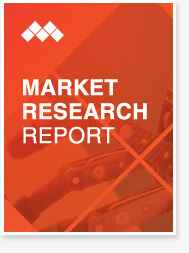Trump Tariff Impact on Hyperscale Data Center Market
How US Tariffs Affect Hyperscale Data Center Operations
The US tariff impact on the Hyperscale Data Center Market primarily revolves around increased costs for critical hardware such as servers, storage systems, networking equipment, and power distribution units. Many of these components are manufactured in China and other Asian markets, making them subject to additional import duties. For business owners and C-level executives, this translates into higher capital expenditures (CapEx) and potential delays in infrastructure expansion.
One of the most pressing concerns is the disruption in supply chain dynamics. Hyperscale operators, including major cloud providers like AWS, Microsoft Azure, and Google Cloud, rely on just-in-time inventory models to maintain efficiency. Tariffs introduce unpredictability, forcing companies to either absorb additional costs or seek alternative suppliers—often at a premium.
Worried About Tariffs? Get Your Customized Risk Report Now
Strategic Responses to Mitigate Tariff-Related Risks
To counter the Trump tariff impact on Hyperscale Data Centers, industry leaders are adopting several strategies:
Diversifying Supply Chains – Many businesses are shifting production to tariff-exempt regions such as Vietnam, Mexico, and India. While this reduces dependency on Chinese imports, it requires significant investment in new supplier relationships and quality assurance processes.
Onshoring Critical Manufacturing – Some hyperscale providers are exploring localized production of key components to avoid import duties altogether. However, the high cost of US-based manufacturing remains a barrier for widespread adoption.
Passing Costs to End Consumers – In cases where cost absorption is unsustainable, businesses may increase service pricing for cloud and colocation clients, potentially affecting competitive positioning.
Leveraging Trade Agreements – Companies are reassessing free trade agreements (FTAs) to identify tariff exemptions or reduced-duty pathways for essential data center hardware.
Long-Term Implications for the Hyperscale Data Center Market
Beyond immediate financial strain, prolonged US tariffs on Hyperscale Data Center components could slow down innovation. Higher equipment costs may lead to deferred upgrades, impacting performance and energy efficiency—a critical factor given the industry’s push toward sustainability. Additionally, smaller players in the market may struggle to compete, leading to further consolidation.
For business owners and department heads, staying ahead requires proactive risk assessment, agile procurement strategies, and close monitoring of trade policy developments. The ability to adapt will determine whether companies thrive or face operational setbacks in an increasingly tariff-sensitive landscape.
Key Questions We Help You Answer:
- Where am I most exposed — and how much is it costing me today?
- What will my EBIT look like under different pass-through scenarios?
- Can I reclassify or re-source to avoid specific tariffs?
- How do I respond if China or the EU retaliates?
- What are my competitors doing that I’m not?
- How do I explain this to my board, CFO, or global customers?
Related Reports:
Hyperscale Data Center Market by Power Capacity (10-50 MW, 50-100 MW, Above 101 MW), IT Infrastructure (Server, Storage, Network), Electrical Infrastructure (PDUs, UPS Systems), Mechanical Infrastructure (Cooling Systems, Rack) - Global Forecast to 2030
Contact:
Mr. Rohan Salgarkar
MarketsandMarkets Inc.
1615 South Congress Ave.
Suite 103,
Delray Beach, FL 33445
USA : 1-888-600-6441
sales@marketsandmarkets.com
This FREE sample includes market data points, ranging from trend analyses to market estimates & forecasts. See for yourself.
SEND ME A FREE SAMPLE





